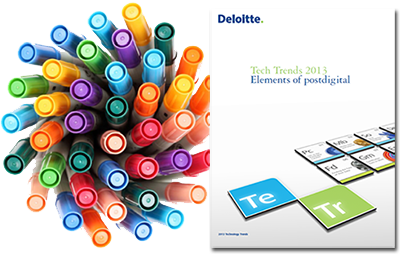Three Key Rules of Gamification of the Workplace
The workplace environment is changing, playing games at work may be more than fun and games, but productive!?
Gaming in the workplace seems counterintuitive. After all, the goal for most employers is to limit time spent playing Angry Birds or Candy Crush Saga at the office, right? Not necessarily. Fun and games at the office may be a key element to the future of work.
Gamification is the process of applying game theory to everyday life — including business life. The concept is simple: Redesign everyday routines and tasks — in everything from employee training and recruiting to product testing and sales force management — to be more game-like and interactive, ultimately enhancing work experiences to be more engaging, fulfilling, fun, and productive.
It’s no longer just a buzzword, either: The gamification market is forecast to hit $5 billion annually by 2018, according to Markets and Markets. Gartner also predicts that by 2014, 70 percent of 2,000 global organizations will use gamified applications for employee performance, health care, marketing and training.
Related: Gartner’s Gamification: Engagement Strategies for Business and IT
So who’s playing good games out there in the enterprise? The list of intriguing examples is growing quickly. Target, for instance, times cashiers in a game-like fashion on how efficiently they ring up purchases; a red light shines if they’re scanning products too slowly, and a green light appears when they’re on pace. The project has boosted cashier efficiency and morale while reducing checkout times. Mobile device retailer Metro PCS uses software similar to The Sims to train new sales clerks on how to sell phones before actually letting them on the store floor.
Recently in Forbes, Adam Penenberg, author of a great must-read on this trend — says management firm Accenture: raise awareness, build buy-in, learn how, introduce initial adoption, and maintain and refine.
Don’t game to squeeze workers
Gaming for increased productivity? Be careful. As Penenberg wisely notes, “I think there is a real possibility that companies will look at so-called gamification as a kind of soma for workers — redesign jobs and mundane tasks so that they are more game-like, and squeeze ever more productivity out of employees. Unfortunately, this is promoting the least interesting aspect of games — usually points. I’m all for companies making the lives of employees more fulfilling, engaging, and satisfying, but that means designing game systems that enhance work, and not simply try to exploit workers.”
About the Author: Jason Corsello is vice president of corporate strategy and marketing at Cornerstone OnDemand.
Related: The Future of Work: How Talent Management Is Powering the Knowledge Value Revolution
Gamification Goes to Work
Where do you start?
The building blocks for gamification are familiar – starting with business objectives, desired outcomes and understanding the audience. For gamification to truly go to work, however, it is important to understand the inner workings of the organization, process interdependencies and behaviors, including the interplay between human actors and the underlying technologies. Some initial steps:
- It’s a social business thing. Like any social business investment, the first step is to clearly articulate the business problem to be addressed. Next, identify the social networks relevant to that objective – spanning both the virtual and the physical world. Third, explore incentives that may cause the networks to engage on that objective. Finally, explore opportunities to greatly decrease traditional constraints with the methods, technologies and media of gamification. These steps may seem pedestrian, but many failed gamification efforts start with a specific game mechanic or platform they want to introduce – not the “why,” “for whom,” and “so what.”
- Design is a team sport. The construct of a game will likely touch on individual incentives, operational and organizational goals, analytics, end-user interface and underlying IT systems. A multi-disciplinary team is needed to represent these dimensions – including social scientists, marketers, game designers, line-of-business managers, data scientists, back-end systems engineers and architects. Business systems are complex and have causation. When applying game dynamics to a business process or the business as a whole, designers should understand the complexity of the rules that govern the organization – and how to increase interaction and engagement with audiences. The game design itself should maintain clarity of its benefits to users – as well as to the organization.
- Measure, tweak and iterate. Intangible effects and lack of measurement criteria have led to the perceived failure of some early gamification efforts. Benchmark current performance, measure the output once the application is activated, and don’t hesitate to revise assumptions, approaches, or tools in response. Almost nothing kills an innovation in business process like failure to move the initiative beyond the pilot implementation. There are three dynamics which need monitoring. First, be sure to maintain momentum within the “interest corridor.” If the game dynamics are too difficult, the participant will likely lose interest and disengage. The same is true if the dynamics are too simple.
Secondly, by gamifying a process, the organization will likely have access to a significant amount of new data that was previously unavailable. Through a feedback mechanism, you may have insights on how to adapt in real time. If harnessed correctly, organizations will likely be able to refine their strategy in real time.
Finally, keep an eye on long-term objectives. Tweaking, measuring and enhancement should be an ongoing process – not a one and done effort. Be sure to fine-tune the model. But more importantly – to keep players engaged over time. What will keep this process exciting and interesting after the first level or achievement is reached? And how will the data that is analyzed regarding behaviors and outcomes cause one to rethink the rewards, incentives and recognition?
Source: Deloitte - Tech Trends 2013














